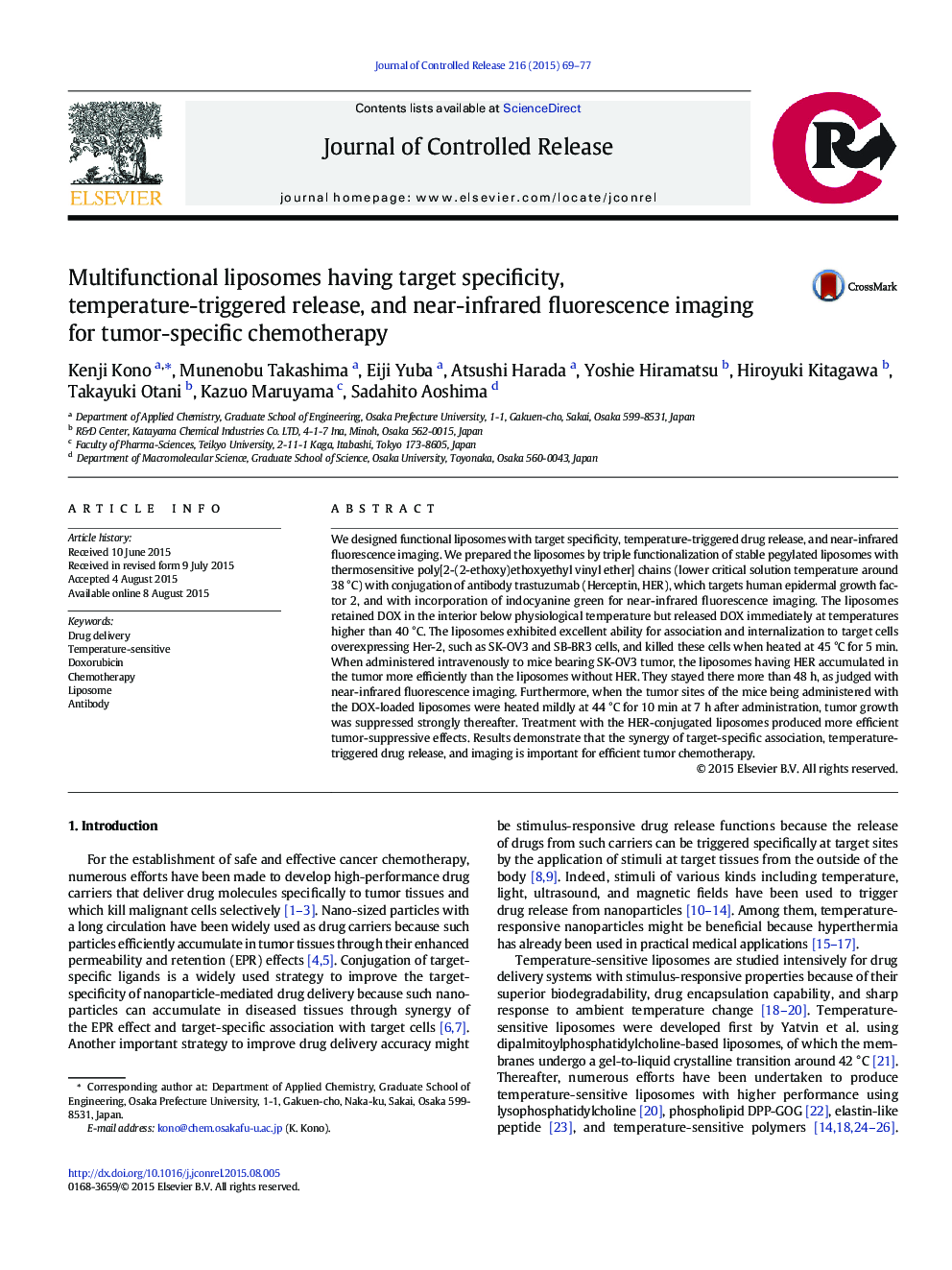| Article ID | Journal | Published Year | Pages | File Type |
|---|---|---|---|---|
| 1423676 | Journal of Controlled Release | 2015 | 9 Pages |
We designed functional liposomes with target specificity, temperature-triggered drug release, and near-infrared fluorescence imaging. We prepared the liposomes by triple functionalization of stable pegylated liposomes with thermosensitive poly[2-(2-ethoxy)ethoxyethyl vinyl ether] chains (lower critical solution temperature around 38 °C) with conjugation of antibody trastuzumab (Herceptin, HER), which targets human epidermal growth factor 2, and with incorporation of indocyanine green for near-infrared fluorescence imaging. The liposomes retained DOX in the interior below physiological temperature but released DOX immediately at temperatures higher than 40 °C. The liposomes exhibited excellent ability for association and internalization to target cells overexpressing Her-2, such as SK-OV3 and SB-BR3 cells, and killed these cells when heated at 45 °C for 5 min. When administered intravenously to mice bearing SK-OV3 tumor, the liposomes having HER accumulated in the tumor more efficiently than the liposomes without HER. They stayed there more than 48 h, as judged with near-infrared fluorescence imaging. Furthermore, when the tumor sites of the mice being administered with the DOX-loaded liposomes were heated mildly at 44 °C for 10 min at 7 h after administration, tumor growth was suppressed strongly thereafter. Treatment with the HER-conjugated liposomes produced more efficient tumor-suppressive effects. Results demonstrate that the synergy of target-specific association, temperature-triggered drug release, and imaging is important for efficient tumor chemotherapy.
Graphical abstractFigure optionsDownload full-size imageDownload high-quality image (453 K)Download as PowerPoint slide
